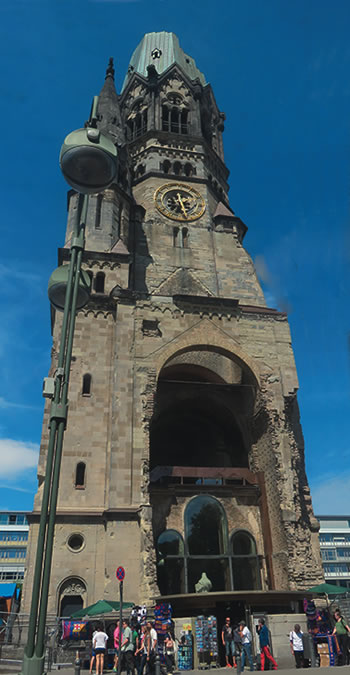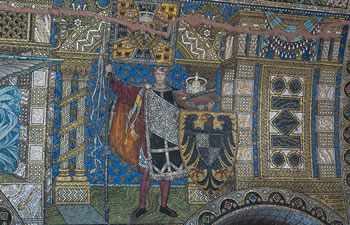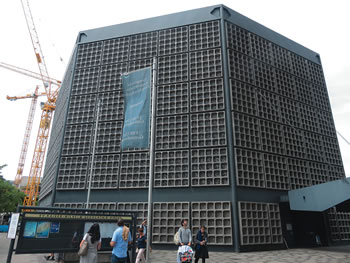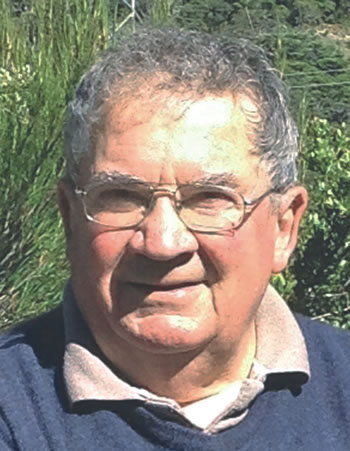Prayerful Churches: Berlin to Remember
For a practicing Catholic, Berlin was a disappointment. The old churches have been turned into museums, and the nearest parish church was too far away to walk from our hotel. We were told that only 2% of Germans attend church.
From the Hop-On-Hop-off bus we had seen a ruined church tower, and on our last day in Berlin we came across it as we walked. It was all that was left of the Kaiser Wilhelm I Memorial Church, (in German: Kaiser-Wilhelm-Gedächtniskirche), built in the 1890s by Kaiser Wilhelm II in memory of his father. It was badly damaged in a bombing raid in 1943. The damaged spire of the old church has been retained and its ground floor has been made into a reminder of World War II. It is a famous landmark of western Berlin, and is nicknamed by Berliners “der Hohle Zahn,” meaning “The Hollow Tooth.”
Inside, there are wall posters describing the history of the Imperial Church, and plenty of photographs of its ruin after the bombing. The main thing I remember was the beautiful mosaics inside.
On either side of the ruined tower are two structures that excited our curiosity, and investigation showed the larger to be the replacement church, the other a belfry. 
The “church” building was open, so we entered to an entirely different church. Constructed of mainly blue glass blocks set in concrete, the effect was almost indescribable. Although somewhat dark, being surrounded by blue gives the feeling of being outside under a very bright starlit sky. The centrepiece is a figure of Christ made in a type of brass, which is suspended above the altar and to me represented Christ ascending. A close-up of it is featured on the front cover.
 I could not take my eyes off Him, with His arms outstretched, stigmata clearly seen, looking on us, pleading “Come to me.”
I could not take my eyes off Him, with His arms outstretched, stigmata clearly seen, looking on us, pleading “Come to me.”
The organ was playing softly, and we sat there for 40 minutes, not in the least inclined to move, on my part just enjoying being in the presence of Christ.
Then a Lutheran minister took his place at midday and started a service in German. My instinct was to leave, but my wife wanted to stay to enjoy the singing, so we did. After a while, the minister broke into English and invited all present to say the Lord’s Prayer in their own language, which we did before leaving the church.
This Lutheran church that didn’t look like a church is one of our abiding memories of Berlin.

 Entries(RSS)
Entries(RSS)